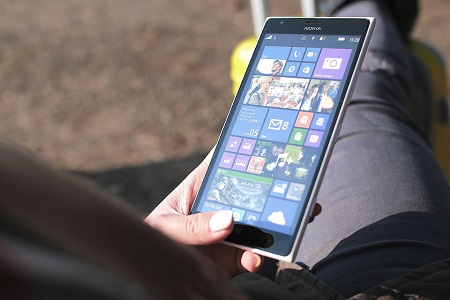The brand will be releasing its first Android powered smartphones and tablets at the beginning of 2017.
The very first Nokia mobile devices that have seen store shelves in two years will start being sold in 2017. They will include both smartphones and tablets. Those gadgets will run on Android, said the company.
The Finnish company is now completing the last stages of a licensing agreement with HMD Global.
Through this new agreement, HMD Global holds exclusive rights to use the brand for Nokia mobile devices for the next 10 years. That company is also based in Finland. It will manufacture phones under the Nokia brand and will also continue the production of the company’s existing feature phone lineup.
 Both HMD Global and Foxconn, a Chinese company, acquired Nokia from Microsoft. Foxconn was contracted for the mobile device manufacturing. The next devices released under the brand’s name will run on Android and will be available for purchase before mid-2017.
Both HMD Global and Foxconn, a Chinese company, acquired Nokia from Microsoft. Foxconn was contracted for the mobile device manufacturing. The next devices released under the brand’s name will run on Android and will be available for purchase before mid-2017.
The Nokia mobile devices will be marketed on the brand’s reputation for simple, quality products.
According to Arto Nummela, HMD Global CEO, “We will be extremely true to the Nokia brand. The brand is known for simplicity, ease of use, reliability, and quality. These are the elements that we will deliver together with amazing industrial design.” That company will be making an investment of more than $500 million into marketing smartphones and tablets under the Nokia name.
Two years ago, Nokia sold its mobile hardware division to Microsoft. The acquisition was for $7.2 billion and required Nokia to stop branding its handsets until the close of this year. The company had been struggling and had already slashed its workforce from 24,000 at its highest to less than 1,000.
Microsoft didn’t do much better with the hardware division. It proceeded to sell the Nokia mobile devices brand to Foxconn and HMD Global for $350 million. This was in response to a massive 46 percent phone revenue nosedive it experienced last quarter. The companies are going ahead with new smartphones and tablets boasting the Nokia brand’s name as well as the Android operating system.
An Adobe report has indicated that mobile shopping could be a great deal more but retailers are holding back.
While retail m-commerce has been moving forward, according to Adobe, it could be doing a great deal better. The firm’s data from Europe showed that traffic to retailer sites isn’t reaching its potential.
Europe saw an increase of 54 percent year over year in its mobile retail traffic from smartphones.
Adobe published its European retail m-commerce data in its 2016 Mobile Retail Report. Beyond traffic, smartphone based shopping has also led to an 89 percent increase in its revenue growth since last year. This is far greater than the increase in revenue growth experienced via desktop – at 8 percent – and tablets – at 10 percent.
 Still, as much as the growth in revenues is significant, mobile commerce conversions aren’t nearly great enough to balance the slipping growth rates in the use of tablets and desktops. Europe saw a consistent increase in smartphone traffic throughout Europe. However, the average retailer experienced very little overall online traffic growth.
Still, as much as the growth in revenues is significant, mobile commerce conversions aren’t nearly great enough to balance the slipping growth rates in the use of tablets and desktops. Europe saw a consistent increase in smartphone traffic throughout Europe. However, the average retailer experienced very little overall online traffic growth.
The boost in retail m-commerce isn’t actually driving up the use of online shopping overall.
On average, European retailers saw a year over year traffic increase of only 3 percent when taking all channels into account. Tablet traffic slid by 8 percent and desktop traffic fell by 7 percent. The smartphone growth rate was by far the highest but it was not adequate to make up for what was lost over other devices.
That said, the online retail revenue growth rate was healthy at 13 percent over last year. This was primarily built on the foundation of desktop purchases, which continue to represent the vast majority of online purchases.
Desktops brought in 74 percent of total online revenue, despite the fact that they represent a notably lower 58 percent of traffic. Clearly, the conversion rate over desktop is significantly higher than over other devices.
Smartphone retail m-commerce represented 12 percent of total online revenue but 27 percent of the traffic to retail sites across Europe. The average order value over desktop was also far greater than over smartphones. In that area, desktop outperformed smartphones by a sizeable 25 percent.
 Both HMD Global and Foxconn, a Chinese company, acquired Nokia from Microsoft. Foxconn was contracted for the mobile device manufacturing. The next devices released under the brand’s name will run on Android and will be available for purchase before mid-2017.
Both HMD Global and Foxconn, a Chinese company, acquired Nokia from Microsoft. Foxconn was contracted for the mobile device manufacturing. The next devices released under the brand’s name will run on Android and will be available for purchase before mid-2017.
 Still, as much as the growth in revenues is significant,
Still, as much as the growth in revenues is significant, 